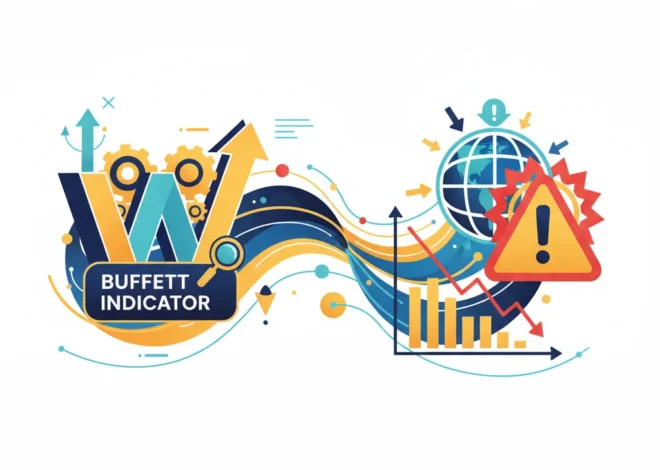
BHP’s Paradox: Why the World’s Biggest Miner is Bullish Amidst China’s Economic Storm
The Great Divide: Navigating a Two-Speed Global Economy
In the intricate dance of the global economy, few partners are as significant as China and the commodity markets. For decades, the narrative was simple: as China boomed, so did the demand for the raw materials that built its cities, powered its factories, and filled its homes. But what happens when one of the world’s most powerful economic engines begins to sputter? The prevailing logic suggests a downturn for resource giants. Yet, BHP, the world’s largest miner by market capitalization, is painting a surprisingly different picture—one of resilience, strategic foresight, and a fundamental reshaping of global demand.
Despite a well-documented slowdown in China’s crucial property sector, BHP’s leadership remains steadfastly optimistic about the future of commodity demand. This isn’t blind optimism; it’s a calculated perspective rooted in a seismic shift in global priorities. The company is looking beyond the immediate headwinds of construction lulls and seeing the powerful, multi-decade tailwinds of decarbonization and electrification. This complex scenario presents a fascinating case study for anyone involved in finance, investing, or global economics, revealing a market in transition and an industry at a pivotal crossroads.
Deconstructing the China Conundrum
For years, the health of the Chinese property market was a primary barometer for the global materials sector. As a voracious consumer of steel, and by extension iron ore, its fluctuations could send shockwaves through the stock market valuations of major miners. Today, that sector is undeniably weak, grappling with debt crises and slowing construction, a reality that BHP openly acknowledges. However, the company’s analysis suggests a more nuanced picture is emerging from within the Chinese economy.
According to BHP’s chief executive, Mike Henry, while property-related steel demand has faltered, other sectors are stepping up to fill the void. “The drag from the housing sector is being offset by robust growth in infrastructure, manufacturing, and automotive sectors,” Henry noted, highlighting a crucial rebalancing act within China’s industrial landscape (source). This includes massive state-led investment in everything from renewable energy projects and high-speed rail to a booming electric vehicle (EV) industry. In essence, the steel once destined for apartment buildings is now being rerouted into wind turbines, solar panel frames, and the chassis of new energy vehicles.
This internal shift is a critical insight for investors who may have a one-dimensional view of China’s commodity appetite. It demonstrates that while the *nature* of demand is changing, the overall *volume* remains surprisingly robust, a testament to the resilience and adaptability of the world’s second-largest economy.
Market Crosscurrents: Navigating Trump's Tariff Threats, Fed Policy, and a Surge in Futures
The New Engine of Growth: Decarbonization and the “Future-Facing” Commodities
While China’s internal rebalancing provides a buffer against near-term shocks, BHP’s long-term bullishness is anchored in a far more global and transformative trend: the green energy transition. This isn’t just a market cycle; it’s a structural supercycle in the making. The global push to decarbonize requires a staggering amount of specific raw materials, and BHP is strategically positioning itself as a primary supplier for this new era.
The commodities at the heart of this revolution—copper, nickel, and potash—are what BHP terms “future-facing commodities.” Their importance cannot be overstated. Copper is the backbone of electrification; it’s essential for EV motors, charging infrastructure, and the massive expansion of electrical grids needed to support renewable energy. Nickel is a critical component in the high-performance batteries that power those EVs. Potash, a key fertilizer ingredient, is vital for improving agricultural yields to feed a growing global population sustainably, reducing the need for land clearing and deforestation.
To illustrate the shift in demand drivers, consider the following breakdown:
| Commodity | Traditional Demand Drivers | Emerging “Green” Demand Drivers |
|---|---|---|
| Iron Ore | Building construction, infrastructure (bridges, rails), traditional automobiles | Renewable energy infrastructure (wind turbine towers), high-speed rail |
| Copper | Housing wiring, plumbing, consumer electronics | Electric vehicles, grid-scale energy storage, wind/solar farms, charging networks |
| Nickel | Stainless steel production, alloys | High-density EV batteries (NMC/NCA chemistries), energy storage systems |
| Potash | Conventional agriculture | Sustainable intensification of farming, biofuel crop production |
This strategic pivot is backed by significant capital. BHP is pouring billions into projects like its Jansen potash mine in Canada, a massive undertaking designed to meet future food and fertilizer demand. This level of investment signals a firm belief that the long-term structural demand for these materials will far outweigh the cyclical volatility of traditional markets. This is not just a mining strategy; it’s a macro-level bet on the future of the global economy.
Reading the Financial Tea Leaves
An optimistic outlook is one thing, but financial performance is the ultimate arbiter of a strategy’s success. On the surface, BHP’s recent results might seem to contradict its bullish tone. The company reported a significant 37% drop in underlying profit to $13.8 billion for the year (source). However, context is everything in finance.
This decline was largely expected by the market and is primarily a reflection of commodity prices normalizing from the stratospheric, post-pandemic highs seen in the previous year. The $13.8 billion figure, while lower, still represents the third-highest profit in the company’s history—a testament to its operational efficiency and the still-elevated, if not peak, price environment. The more telling metric is how the company is deploying its capital. By continuing to invest heavily in future-facing projects while maintaining shareholder returns, BHP is signaling confidence that future cash flows will justify today’s expenditures.
For those engaged in stock market trading and analysis, this is a classic case of looking past the headline numbers to understand the underlying strategic direction. The company is using the profits from its legacy operations (like iron ore) to fund its transformation into a leader of the new energy economy.
Beyond the Headlines: A Deep Dive into the New U.S.-China Trade Spat and Your Investment Strategy
Implications for Investors and the Global Market
So, what are the key takeaways for investors, business leaders, and anyone with a stake in the global economy?
- A Two-Tier Commodity Market: The market is bifurcating. Traditional commodities like iron ore and coal face a future of slower growth and potential decline, heavily tied to the fortunes of specific sectors like Chinese property. In contrast, “green” commodities like copper and nickel are entering a period of structurally high demand driven by a global, policy-backed megatrend. Investment strategies must now differentiate between these two realities.
- The Power of Long-Term Trends: BHP’s strategy is a masterclass in aligning a business model with powerful, long-term secular trends over short-term cyclical noise. This is a crucial lesson for long-term investing, emphasizing the importance of identifying and backing the fundamental shifts that will shape the next decade.
- The Evolving Role of Technology: While not the focus of this report, the backdrop includes a rapid evolution in how these commodities are traded and tracked. The rise of sophisticated financial technology and fintech platforms allows for more efficient price discovery and risk management in volatile markets. Furthermore, technologies like blockchain are increasingly being explored to enhance supply chain transparency, ensuring that materials are sourced ethically and sustainably—a growing concern for end-users like EV manufacturers and their customers.
The intricate negotiations between BHP and its Chinese customers over iron ore prices serve as a microcosm of this new world—a world where the old guard of industrial demand meets the new vanguard of green technology. It’s a delicate balance of managing legacy relationships while investing in a radically different future.
The ,000 Gold Prophecy: Decoding Bank of America's Bold Bet on a New Commodity Supercycle
Conclusion: A Barometer for a Changing World
BHP’s resilient outlook is more than just a corporate forecast; it’s a reflection of a global economic realignment. The company’s ability to see past the immediate storm clouds of China’s property sector and focus on the clear skies of the energy transition offers a powerful lesson in strategic foresight. It underscores that while the drivers of demand are evolving, the world’s need for raw materials is not diminishing—it’s simply changing form.
For investors and market observers, the BHP story is a crucial barometer. It signals that the most successful enterprises of the future will be those that can navigate the complexities of today while making bold, decisive bets on the realities of tomorrow. The transition will be challenging and filled with uncertainty, but for those who can correctly read the tea leaves, the opportunities will be immense.


